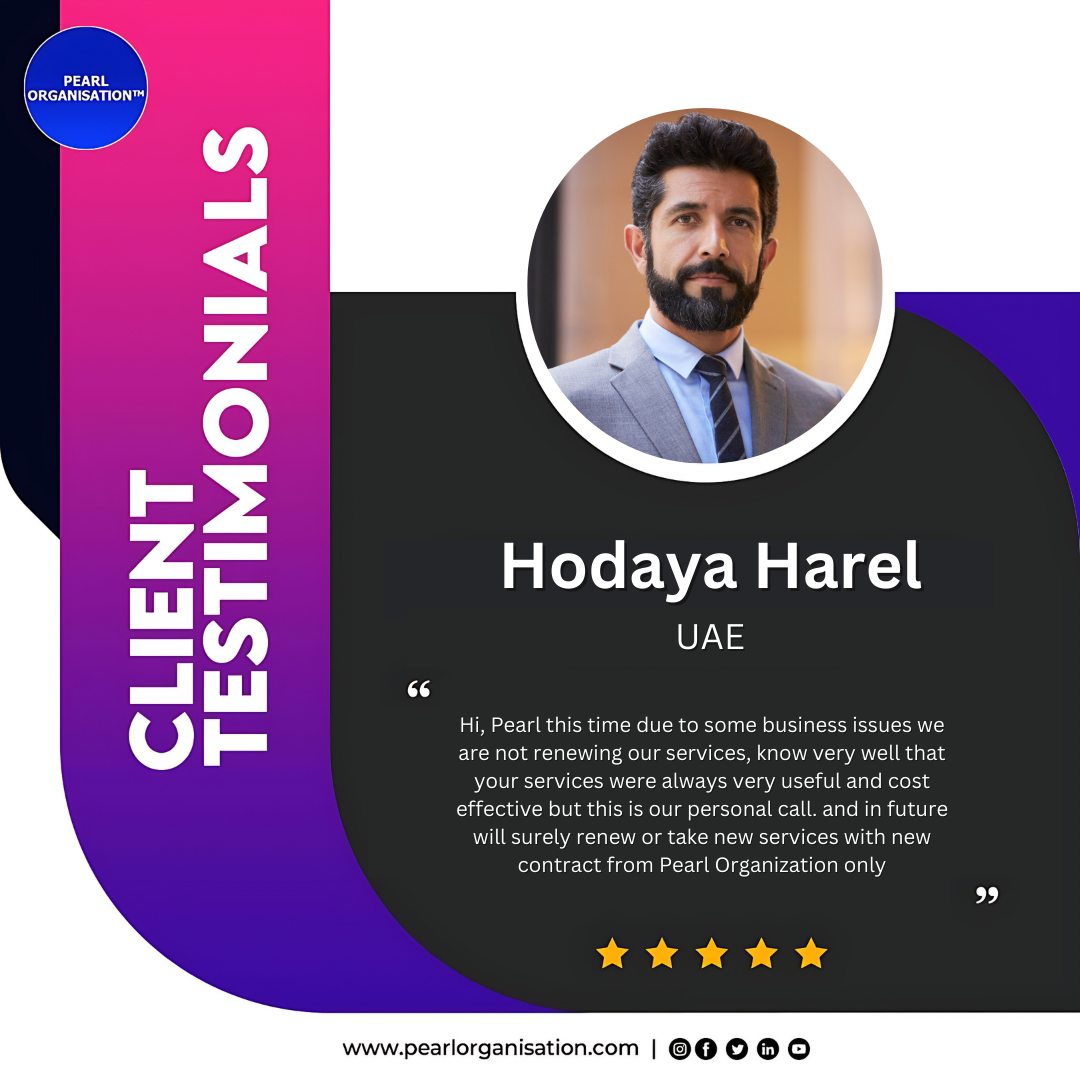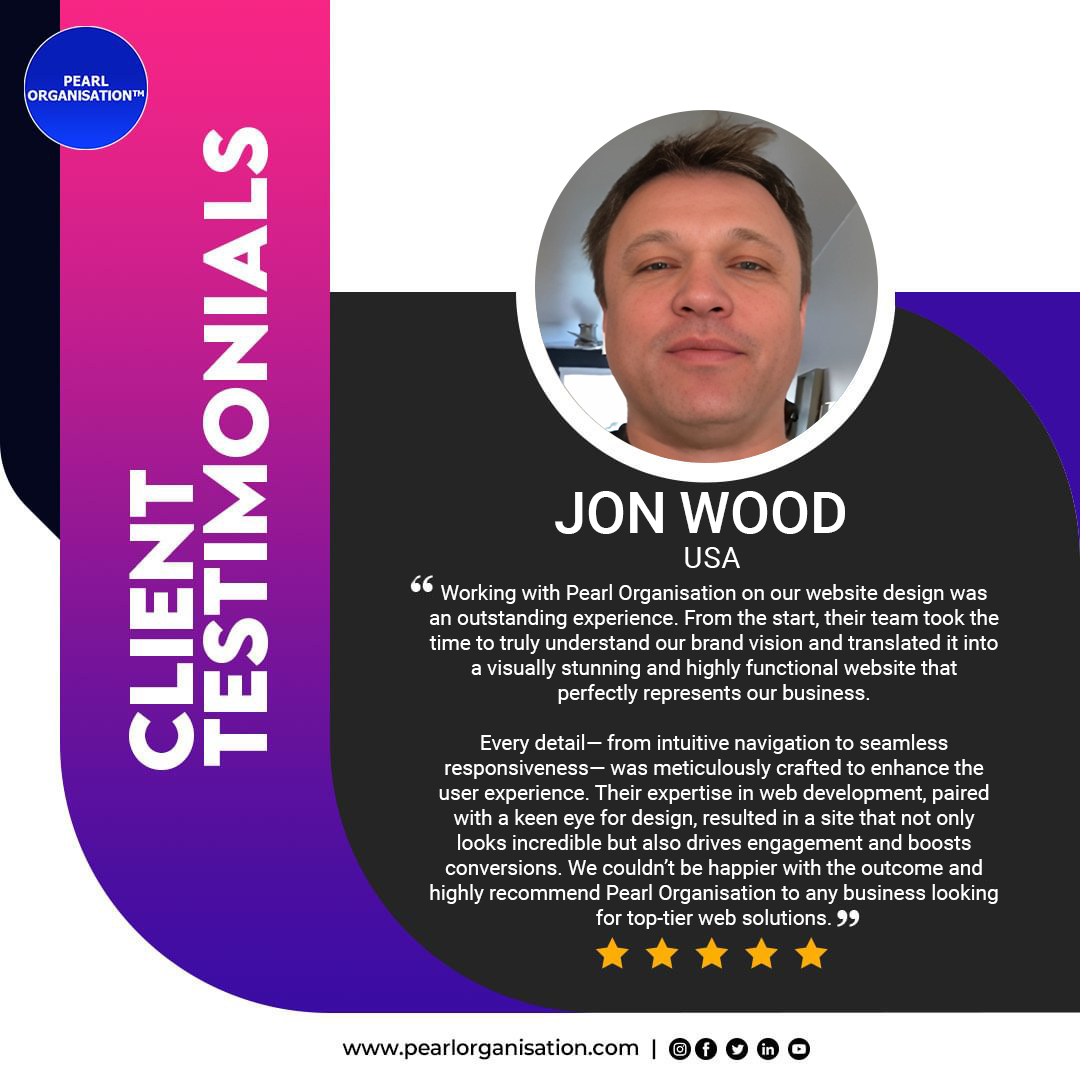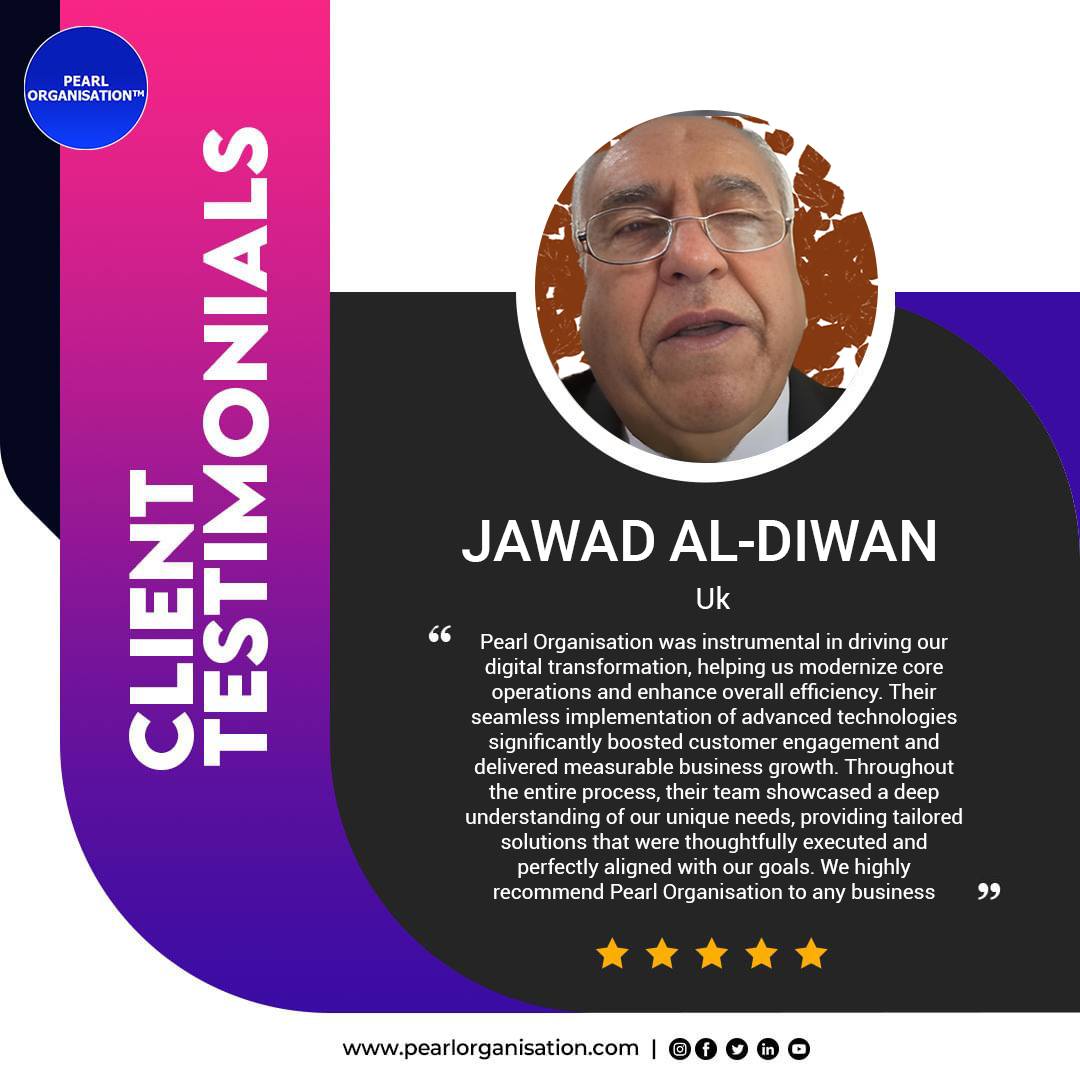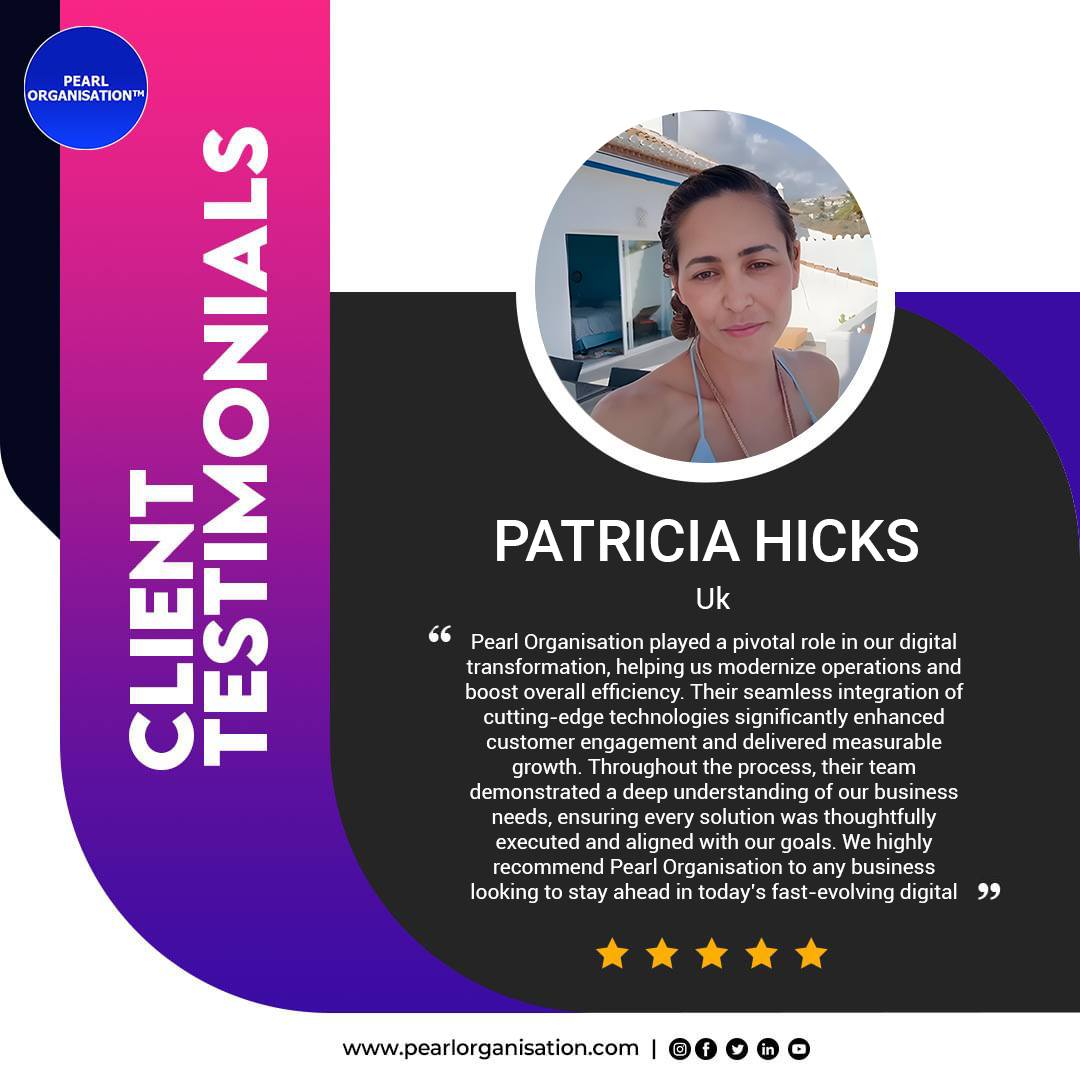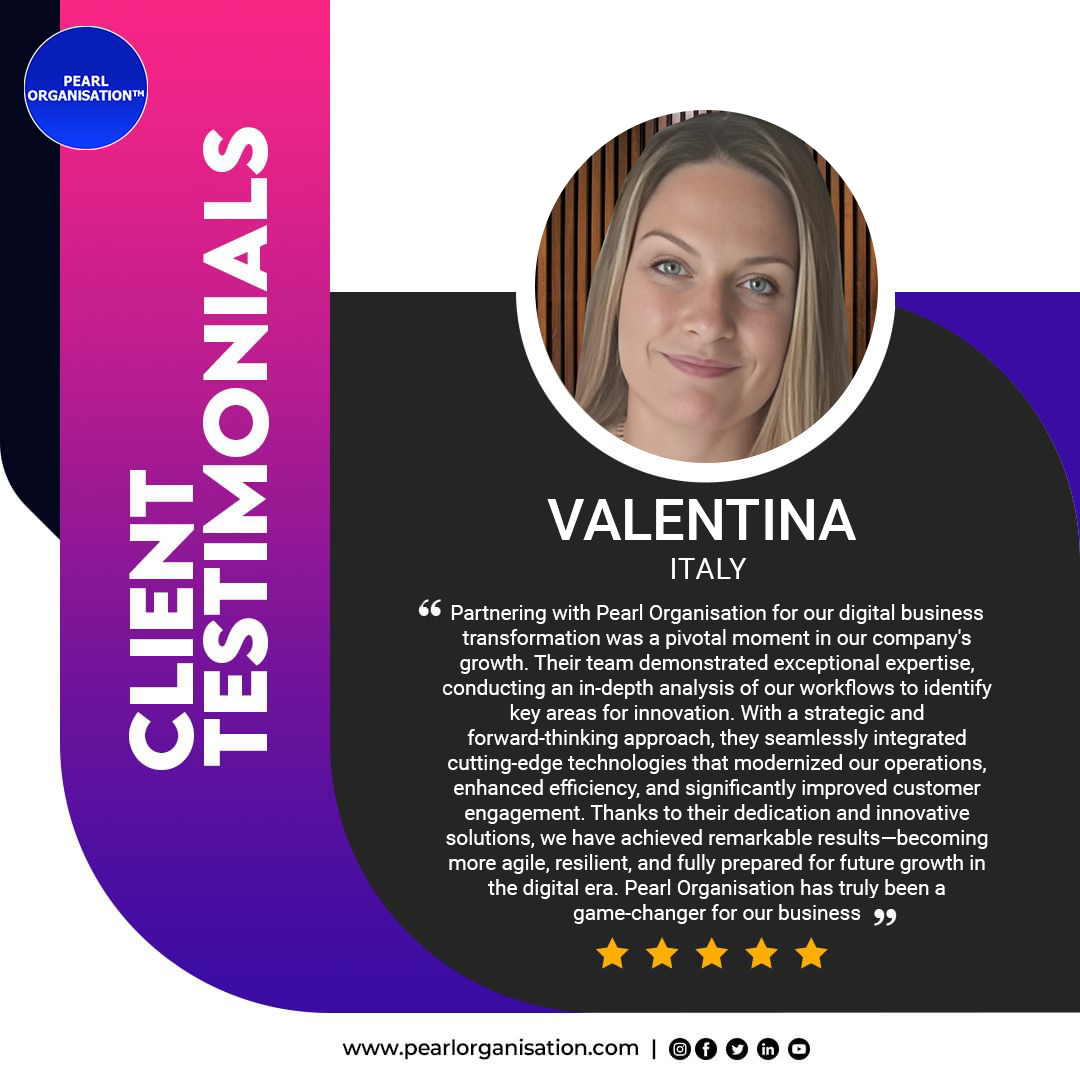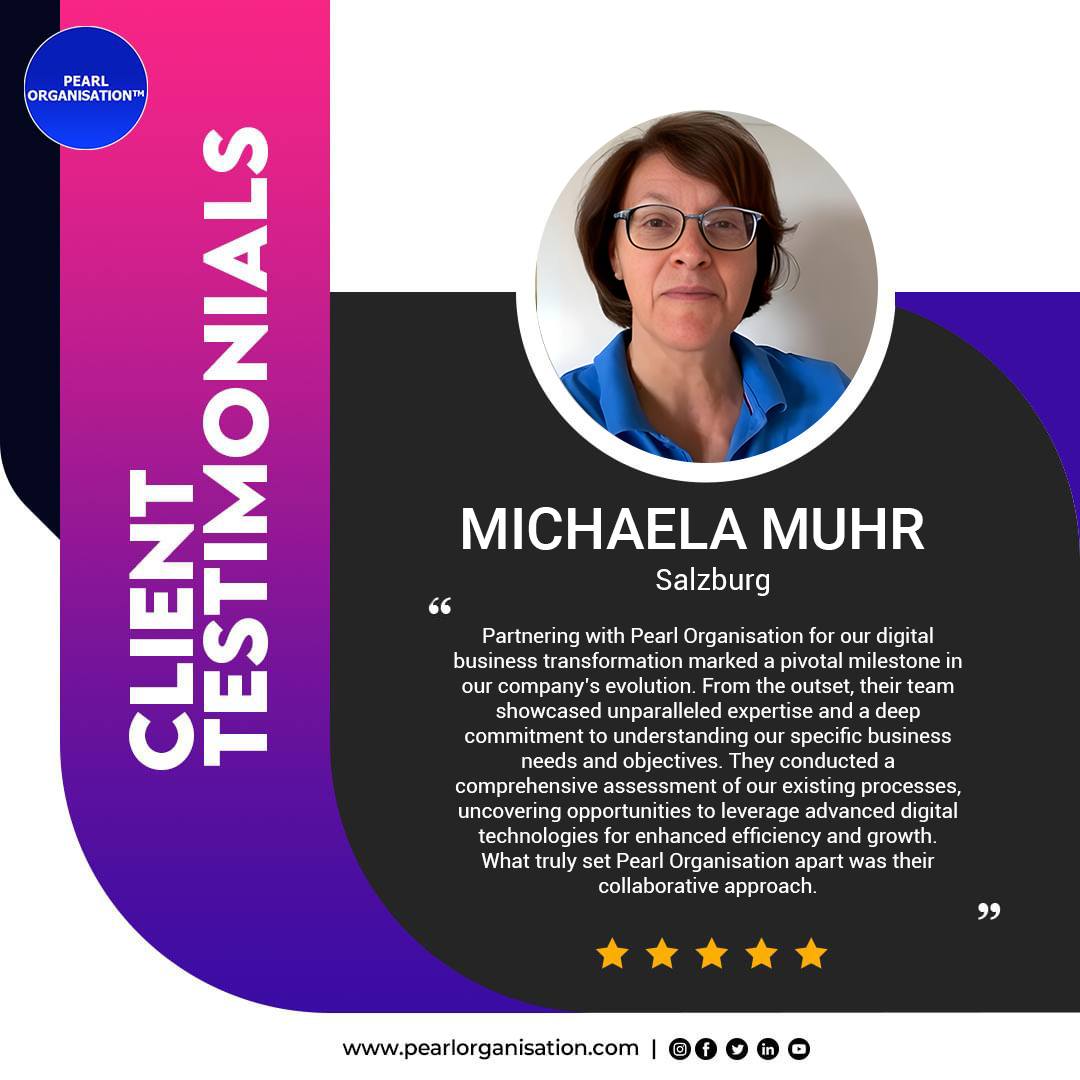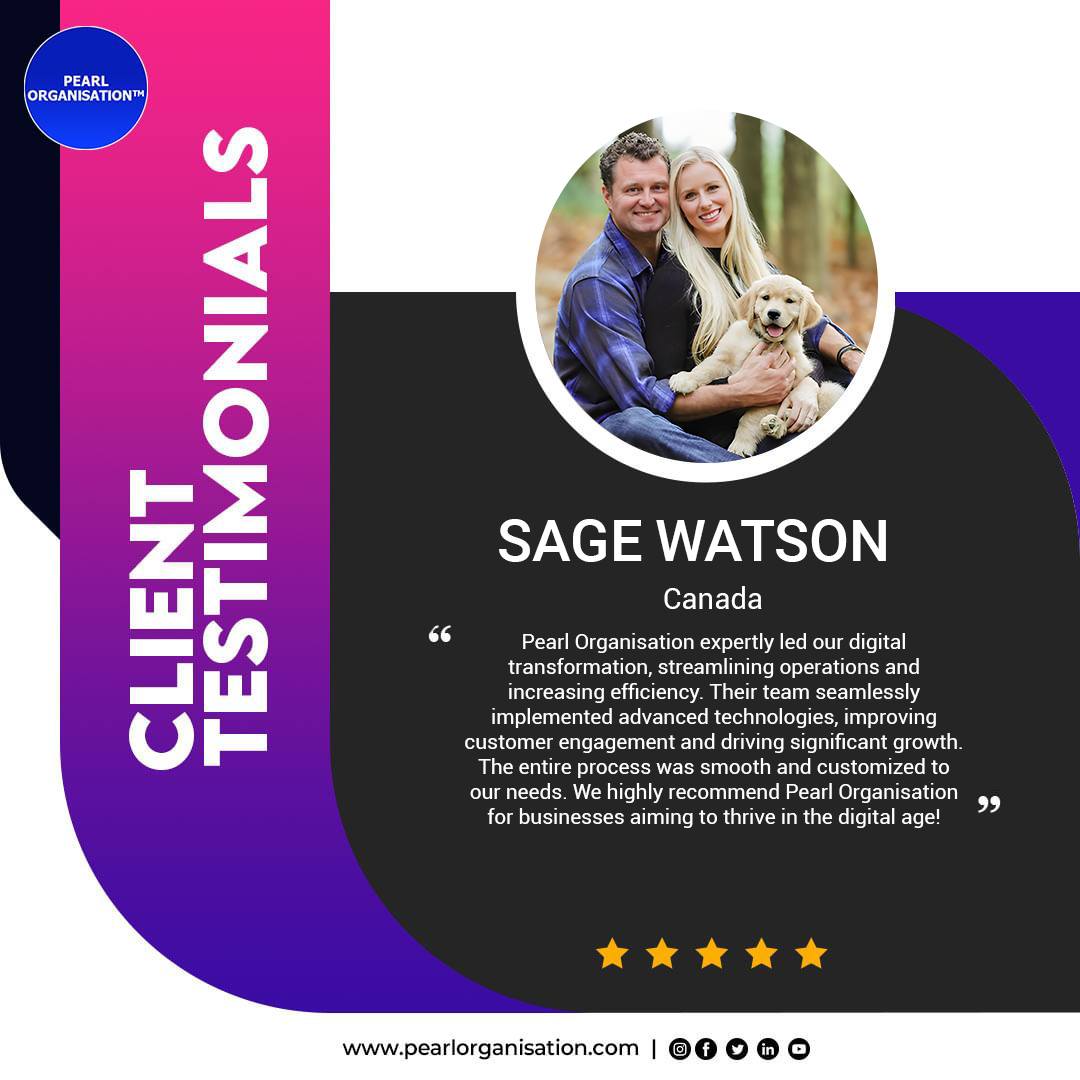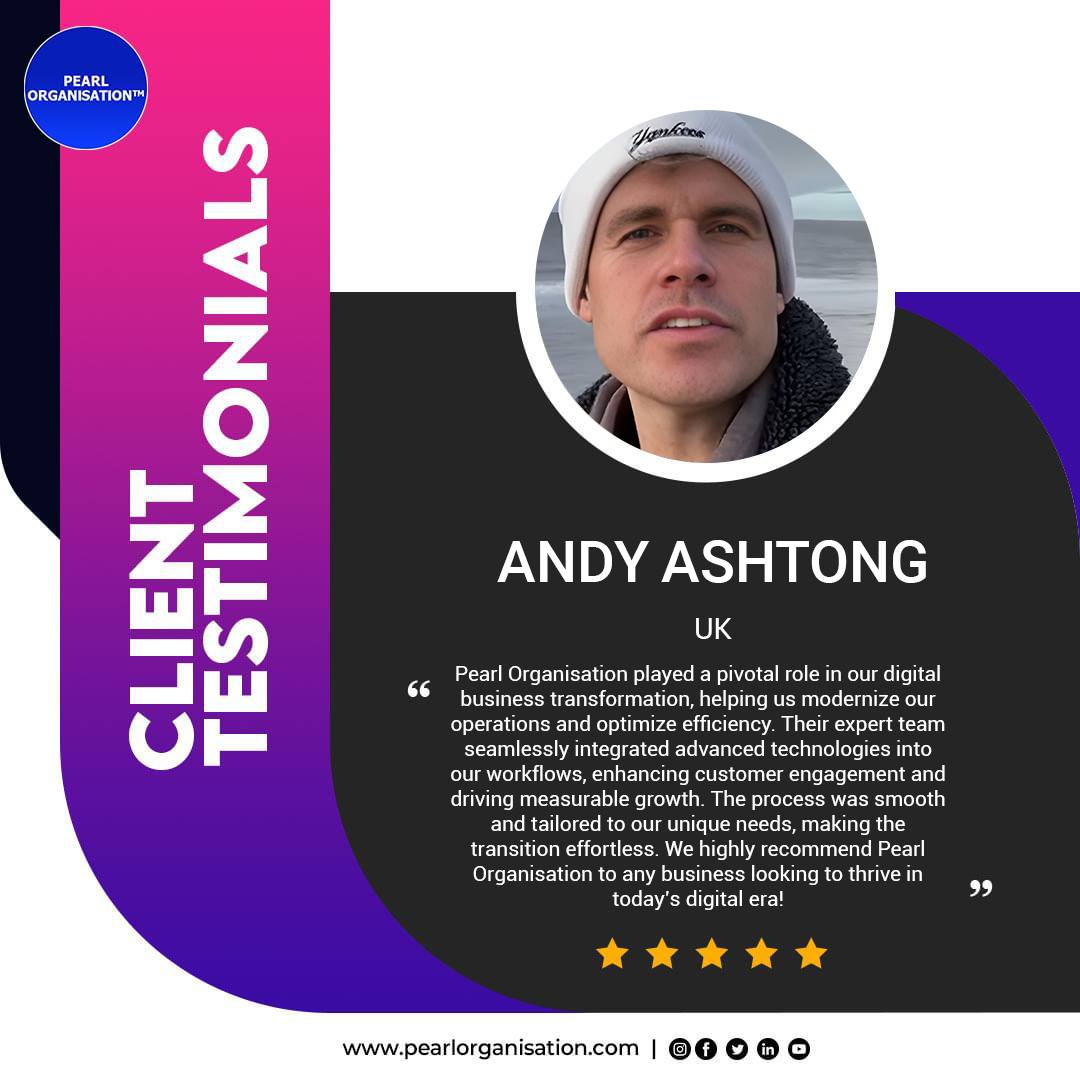Why Your Website Is Not Ranking and How to Fix It ?
- Larrisa

- Sep 22
- 9 min read

Introduction: Why Ranking Matters More Than Ever
In today’s digital-first economy, your website is often the first interaction customers have with your business. A strong website builds credibility, attracts organic traffic, and turns visitors into paying clients. But here’s the harsh reality — a website that doesn’t rank is like a billboard in the middle of a desert. It exists, but no one sees it.
Recent industry research shows that:
75% of users never scroll past the first page of Google.
68% of online experiences begin with a search engine.
Businesses ranking in the top 3 organic spots get 54.4% of all clicks.
If your website isn’t ranking, you’re not just losing visibility — you’re losing sales, leads, and long-term growth opportunities. In this article, we’ll explore in-depth why websites fail to rank, what you can do about it, and how Pearl Organisation helps businesses turn their websites into powerful ranking machines.
1. Technical SEO Issues: The Foundation of Rankings
Think of your website like a building. If the foundation is cracked, no matter how beautiful the design, it will collapse. Technical SEO is that foundation. Without fixing it, every other SEO effort will fail.
1.1 Page Speed & Core Web Vitals
Google prioritizes websites that load fast and perform well. According to Google, a delay of just 1 second in mobile load times can impact conversion rates by up to 20%.
Symptoms: High bounce rate, poor engagement.
Fixes:
Compress and lazy-load images.
Use a CDN (Content Delivery Network).
Enable GZIP/Brotli compression.
Optimize JavaScript and CSS.
Monitor with Google PageSpeed Insights and Lighthouse.
1.2 Mobile Responsiveness
Since 2019, Google has adopted mobile-first indexing, meaning it evaluates the mobile version of your website first.
Symptoms: Site looks broken or cluttered on smartphones.
Fixes:
Use responsive frameworks (Bootstrap, Tailwind).
Ensure fonts and buttons are touch-friendly.
Test with Google’s Mobile-Friendly Tool.
1.3 Crawlability & Indexability
If Google can’t crawl your site, it can’t rank it.
Common Issues:
Blocked pages in robots.txt.
Missing XML sitemap.
Duplicate URLs with no canonical tags.
Fixes:
Generate & submit XML sitemap in Google Search Console.
Use canonical tags for duplicate pages.
Fix crawl errors reported by Google.
1.4 HTTPS Security
Websites without HTTPS are marked “Not Secure” by browsers. This kills user trust and rankings.
👉 At Pearl Organisation, every SEO package includes a technical audit & fix implementation so your foundation is unshakable.
2. On-Page SEO: Making Your Content Search-Friendly
On-page SEO is how you communicate with search engines. If your site isn’t optimized, Google has no clue what your page is about.
2.1 Titles & Meta Descriptions
Mistake: Generic or missing metadata.
Fix:
Write keyword-rich, compelling titles (60 characters max).
Create engaging meta descriptions (150–160 characters).
Example: Instead of “Home – Company Name,” use:“Affordable ERP & CRM Software | Pearl Organisation – Boost Your Business Growth”
2.2 Header Structure (H1, H2, H3)
Headers tell Google which sections are important.
Use only one H1 per page.
Use H2s for subsections, H3s for deeper detail.
2.3 Content Optimization
Include primary keywords naturally in the first 100 words.
Use LSI (Latent Semantic Indexing) keywords for broader coverage.
Add multimedia (images, infographics, videos).
2.4 Internal Linking
Internal links pass authority and guide Google through your site.
Each page should link to 3–5 related pages.
Use descriptive anchor text (not just “click here”).
👉 Pearl Organisation’s SEO team ensures every page is on-page optimized for maximum visibility.
3. Content Quality: The King That Rules SEO
Content is the #1 reason users come to your site. Without it, your site won’t rank. But not all content is equal.
3.1 Thin & Duplicate Content
Pages with fewer than 300 words are ignored by Google.
Copying content from other sites can get you penalized.
3.2 User Intent Alignment
There are 4 types of search intent:
Informational: “Why isn’t my website ranking?”
Navigational: “Pearl Organisation website.”
Transactional: “Buy SEO services in India.”
Commercial: “Best SEO company for startups.”
If your content doesn’t match intent, you won’t rank.
3.3 Long-Form Authority Content
Research shows pages with 2,000+ words rank better because they cover a topic in detail.
👉 Pearl Organisation creates pillar content + cluster blogs that build topical authority, making your site rank higher across multiple keywords.
4. Backlinks: Earning Google’s Trust
Backlinks are still one of Google’s top 3 ranking factors. They’re like votes of trust from other websites.
4.1 Common Backlink Mistakes
Buying links from spammy sites.
No backlinks at all.
Over-optimized anchor texts.
4.2 Link Building That Works
👉 Pearl Organisation builds high-authority backlinks from relevant sources, not spammy directories.
5. User Experience (UX): Google Ranks Happy Visitors
Google’s RankBrain measures how users interact with your site. Poor UX = poor rankings.
Key UX Signals
UX Fixes
Simplify navigation.
Use CTAs strategically.
Improve readability (short paragraphs, bullets).
Speed up loading.
👉 Pearl Organisation merges design + SEO to create experiences that both rank and convert.
6. Local SEO: Winning the Nearby Market
If you’re a local business but ignoring local SEO, you’re invisible to nearby customers.
Local SEO Essentials
Optimize Google Business Profile.
Add schema for local business.
Use city/region-specific keywords.
Build local citations.
Encourage customer reviews.
👉 Pearl Organisation’s local SEO services help businesses dominate Google Maps and “near me” searches.
7. SEO Trends: Staying Ahead of the Curve
SEO is evolving faster than ever. If you’re stuck in 2018 strategies, you won’t rank.
Trends to Watch in 2025
Core Web Vitals are mandatory.
Voice Search: “Hey Google, find me the best IT company in Dehradun.”
AI & Semantic Search: Google’s SGE changes how queries are answered.
E-E-A-T: Expertise, Experience, Authoritativeness, Trust.
👉 Pearl Organisation constantly adapts strategies to align with Google’s latest algorithms.
8. Measuring SEO Success: Data-Driven Growth
SEO is not guesswork. You need to track and measure performance.
Key Metrics
👉 Pearl Organisation provides monthly reports with transparent KPIs so you see exactly how SEO is driving results.
Case Example: Turning Failure Into Ranking Success
One Pearl Organisation client in the automobile sector had:
A beautiful website, but stuck on page 5.
Low organic traffic and high bounce rate.
No backlinks and outdated blogs.
Pearl Organisation Strategy:
Conducted a technical SEO audit → fixed 87 issues.
Optimized service pages with proper on-page SEO.
Created 12 pillar blogs targeting long-tail keywords.
Built 35 high-authority backlinks.
Improved UX with clear CTAs.
Results in 6 months:
Organic traffic ↑ 230%.
Bounce rate ↓ 41%.
Top 10 rankings for 21 keywords.
Qualified leads tripled.
How Pearl Organisation Helps You Rank
When you choose Pearl Organisation’s SEO & SMO Packages, you get:
We don’t promise overnight success — we deliver sustainable, long-term growth.
Conclusion: From Invisible to Unmissable
A non-ranking website is a silent killer for businesses. The reasons could be technical flaws, weak content, lack of backlinks, poor UX, or outdated SEO strategies.
The fix? A comprehensive, data-driven SEO strategy that tackles all these fronts.
🚀 Ready to stop being invisible?👉 Explore Pearl Organisation’s SEO & SMO Packages and let our experts turn your website into a lead-generating powerhouse.
FAQs :
1. Why is my website not showing up on Google?
There are several possible reasons: your site may not be indexed, you may have technical errors (robots.txt blocking pages, no sitemap), or your content may lack relevance and authority. Sometimes it’s due to poor backlinks or penalties from spammy practices.
👉 A complete SEO audit from Pearl Organisation identifies and fixes these problems to ensure your site appears on Google.
2. How long does it take for a website to rank on Google?
SEO is a long-term game. For new websites, it usually takes 3–6 months to see noticeable results, while established domains may see improvements faster if optimized properly. Factors like competition, keyword difficulty, and content quality also affect timelines.
3. Can a website rank without SEO?
No. While a brand-new site may appear for its exact name, ranking for competitive keywords without SEO is almost impossible. SEO provides the structure, content, and authority signals Google needs to rank your site above competitors.
4. Why does my competitor rank higher than me?
Competitors may:
Have more backlinks from authoritative sources.
Publish better-optimized content.
Offer superior technical SEO (speed, mobile, Core Web Vitals).
Actively invest in local SEO and reviews.
👉 With Pearl Organisation, you can benchmark against competitors and build strategies to outrank them.
5. Does domain age affect rankings?
Yes, older domains with a history of quality content and backlinks have an advantage. However, new websites can outrank older competitors with better SEO strategies and consistent optimization.
6. How do I know if my site is penalized by Google?
Check for sudden drops in traffic, missing pages in search results, or warnings in Google Search Console. Penalties can be manual (due to spammy links/content) or algorithmic (due to updates like Penguin/Panda).
7. Is paid advertising better than SEO for ranking?
Paid ads give instant visibility but stop once you stop paying. SEO builds long-term organic traffic that compounds over time. The best strategy is often a mix of both SEO and PPC for maximum ROI.
8. Why doesn’t great design guarantee good rankings?
A beautiful design doesn’t mean search engines understand your site. Without proper SEO — optimized titles, schema, keywords, and content — even the most attractive website will fail to rank.
9. Do backlinks still matter in 2025?
Yes — backlinks remain one of Google’s top 3 ranking factors. However, quality matters more than quantity. A single backlink from a trusted site can outweigh dozens of low-quality links.
10. How important is mobile SEO for rankings?
Critical. With mobile-first indexing, Google prioritizes the mobile version of your website. If your site isn’t mobile-friendly, expect lower rankings.
11. Can duplicate content hurt SEO?
Yes. Duplicate or plagiarized content confuses search engines and can lead to ranking penalties. Always use unique, original, and valuable content.
12. Why isn’t my website ranking for my brand name?
This usually happens if your site is not indexed or if your brand name is highly generic. Ensure you’ve submitted your site to Google Search Console and optimized meta titles and descriptions with your brand name.
13. How do Core Web Vitals impact rankings?
Google uses Core Web Vitals (LCP, CLS, FID) to measure page load speed, interactivity, and stability. Poor scores hurt both UX and rankings.
14. Can SEO guarantee #1 ranking?
No ethical SEO agency can guarantee a #1 spot because rankings depend on hundreds of factors and ongoing algorithm updates. A trusted partner like Pearl Organisation guarantees consistent growth and improved visibility, not fake promises.
15. Why is local SEO important for small businesses?
Local SEO ensures you appear in Google Maps and “near me” searches. For example, a user searching “best IT company in Dehradun” will see businesses optimized for local SEO first.
16. How often should I update my website content?
Content should be updated regularly — at least every 6–12 months for evergreen pages. Outdated information can hurt both rankings and credibility.
17. Why is my site traffic dropping suddenly?
Possible causes:
Google algorithm update.
Technical issues (server downtime, crawl errors).
Lost backlinks.
Competitors outranking you.
👉 Pearl Organisation monitors traffic trends and implements corrective SEO measures.
18. Is SEO different for eCommerce websites?
Yes. E-commerce SEO requires product optimization, schema for products/reviews, handling duplicate product pages, and fast mobile checkout optimization.
19. Can social media improve my website ranking?
Indirectly, yes. Social signals (shares, engagement) don’t directly affect rankings, but they increase brand visibility, generate backlinks, and drive referral traffic.
20. Why do some pages rank, but not others?
Google ranks pages individually. If a page lacks optimization, keywords, or backlinks, it may not rank even if other parts of your site perform well.
21. How much does SEO cost for small businesses?
SEO pricing varies based on services, competition, and goals. Pearl Organisation offers flexible packages (Basic, Normal, Advanced) to suit businesses of every size.
22. Can AI tools like ChatGPT replace SEO?
AI can assist with content creation and analysis, but it can’t replace strategic SEO, technical fixes, and link-building. SEO is still a human-driven process powered by data and expertise.
23. Do I need SEO if I already run Google Ads?
Yes. Ads provide short-term visibility, while SEO builds long-term authority. The best digital marketing strategy combines both.
24. How do I choose the right SEO company?
Look for:
Transparency in reporting.
Proven case studies.
Ethical practices (no black-hat SEO).
Clear communication.
👉 Pearl Organisation checks all these boxes with a 96% success rate and 18,000+ projects delivered.
25. Final Takeaway: Why Invest in SEO Now?
Without SEO, your website is invisible. With SEO, you:
Attract targeted organic traffic.
Build trust and authority.
Convert visitors into loyal customers.
Future-proof your business.
👉 Explore Pearl Organisation’s SEO & SMO Packages and take the first step toward higher rankings today.





























